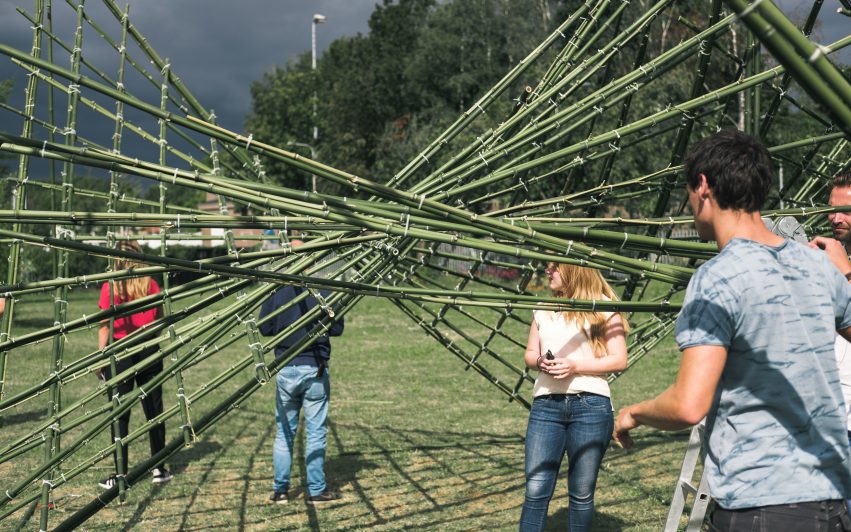Bamboo is a strong, quick growing, and very sustainable material that is used structurally for thousands of years in many parts of the world. In modern times, bamboo has the potential to be an aesthetically pleasing and low-cost alternative to more conventional materials, such as timber.
Bamboo is part of a subfamily of grass. During its growth, silicon and lignin deposits in the cell walls strengthen the bamboo, which takes three to five years. There are about 1.500 species of bamboo. The woody bamboos species used for building are resistant to insects and funghi. Also bamboo is capable to capture CO2 from the atmosphere. In terms of strength and stiffness bamboo performs well, compared with materials such as steel, concrete and wood. For floors, furniture and walls; bamboo plywood can be used. Plywood are layered sheets of bamboo made by processing large bamboo stems.
Kaminski, S. (2016). Structural use of bamboo: Part 1: Introduction to bamboo. Retrieved from https://www.researchgate.net/publication/305808084_Structural_use_of_bamboo_Part_1_Introduction_to_bamboo
Would you like to read more about what can be done with bamboo? Click here!

